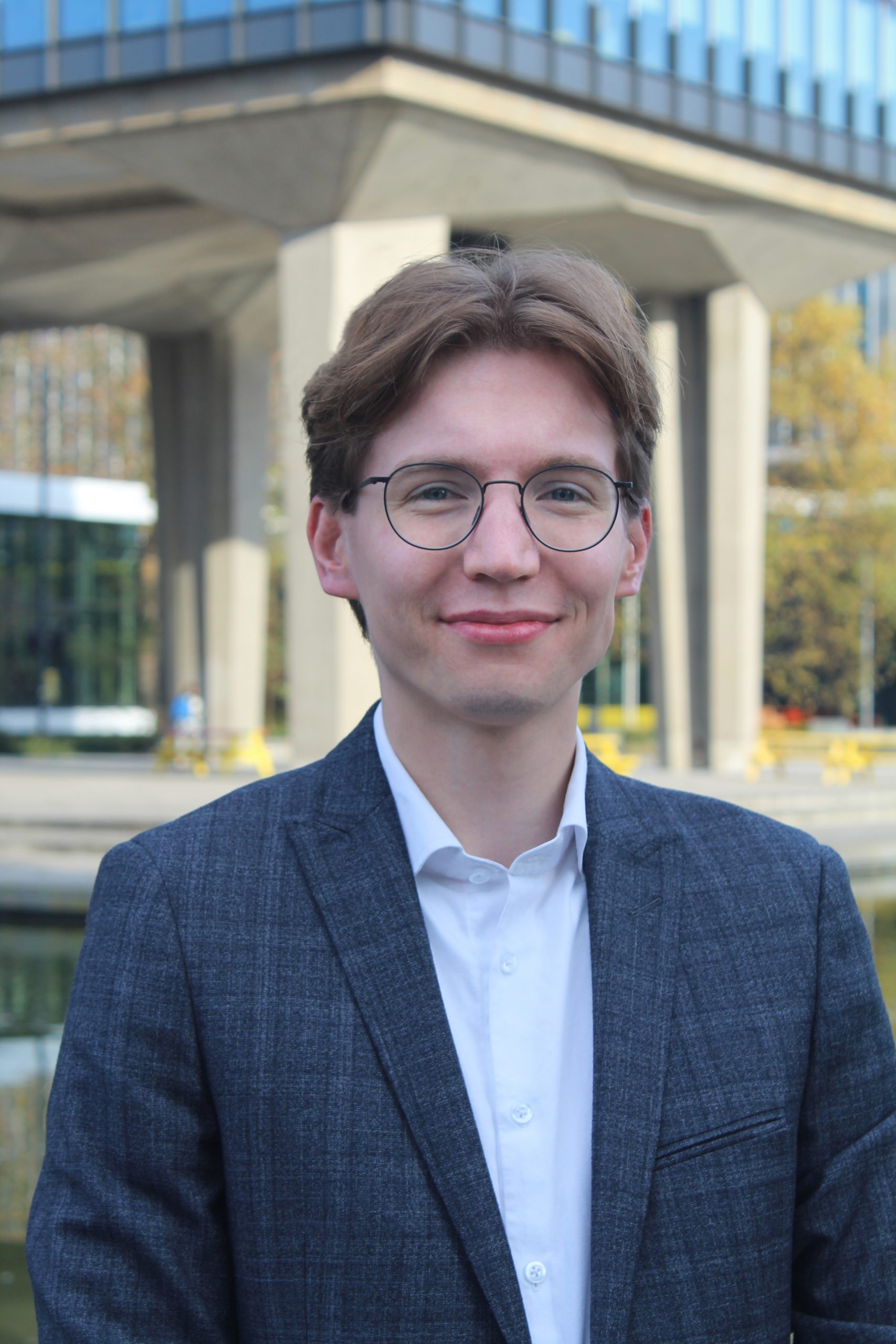Introduction Theme: Artificial Intelligence in the Built Environment
Editie: 29 - Artificial Intelligence in the Built Environment
Published on: 21 maart 2022
Vaak genoeg wordt er gezegd dat de bouwsector een van de meest conservatieve sectoren is. Hierbij gaat het dan om conservatief in de betekenis van weinig innovatie, weinig diversiteit en weinig oog voor maatschappelijke ontwikkelingen (Jaarsma & Hamdan, n.d.). Echter, de sector heeft de afgelopen twintig tot dertig jaar grote ontwikkelingen doorgemaakt op het gebied van ontwerp en proces. Tot de jaren negentig werd er nog gebruik gemaakt van fysieke bouwtekeningen (Selij, 2015). In de jaren negentig deden CAD-programma’s zijn intrede en werden papieren ontwerpen omgezet tot computer ontwerpen. Sindsdien heeft er een stroomversnelling plaatsgevonden in de ontwikkelingen van bouwtekeningen en ontwerpprocessen. Nu is het mogelijk voor alle partijen binnen het bouwproces om samen te werken binnen een omgeving met BIM (Building Information Model) model als standaard.
De innovatie binnen de bouw- en vastgoedsector gaat van digitalisering verder naar nieuwe ontwikkelingen. Zo wordt er op de Technische Universiteit Eindhoven al uitgebreid onderzoek gedaan naar: het gebruik van 3D beton printen; domotica in huizen ten behoeve van kwaliteit, leefgemak en verbetering van het woongenot; slimme mobiliteitsoplossingen voor verbetering van de doorstroom van het verkeer (Heijden, n.d.). De volgende stap in de ontwikkeling is om de software delen van het werk over te laten nemen, met behulp van Artificial Intelligence. Het gebruik van AI in de gebouwde omgeving krijgt steeds meer vorm, maar er is nog veel te winnen. Het gaat momenteel nog om relatief kleine, praktische innovaties die sporadisch worden toegepast in de woning en commerciële bouw. De toekomst ligt in het grootschalig toepassen van slimme systemen die de ontwikkeling en het gebruik van vastgoed verbeteren.
De vraag is dus of je de bouw- en vastgoedsector als conservatief aan kunt stellen. Gebouwen zien er over het algemeen vanaf de buitenkant ongeveer hetzelfde uit, verandering vallen niet meteen op. Echter, als je wat beter naar het gebouw kijkt zie je dat er veel nieuwe technologieën en materialen worden gebruikt waar we 50 jaar geleden slechts over konden dromen. Het is dus geen conservatieve sector, het probleem is alleen dat innovatie een langere tijd nodig heeft om geïmplementeerd te worden. Het ontwikkelen van een gebouw kost vaak vele jaren en er moet worden samengewerkt met tientallen partners. De implementatie van Artificial Intelligence in de gebouwde omgeving is niet een onmiddellijke omslag. Het is een proces over vele jaren en vele projecten, toch ligt realisatie dicht bij ons in de toekomst.
Thema-artikelen
Voor het thema Artificial Intelligence in de gebouwde omgeving hebben verschillende professionals een stuk geschreven over hun bevinden met betrekking op de AI. De artikelen omvatten een breed spectrum van AI in de gebouwde omgeving, van een conceptueel toekomstbeeld tot praktische toepassingen binnen de taxatie sector. Ekaterina Petrova, Assistant Professor of Artificial Intelligence in Construction aan de faculteit Bouwkunde van de TUe, zal ingaan op intelligent bouwen en bouwen met AI, kijkende naar de mogelijkheden die er liggen. Matthijs Hofman, product owner bij Brainbay BV, wijdt uit over een praktische toepassing van AI binnen het vastgoed, namelijk de toepassing van Artificial Intelligence voor het inschatten van de waarde van een woning. Binnen het thema hebben er ook twee interviews plaatsgevonden. De eerste met Masi Mohammadi, hoofdonderzoeker en leider van het onderzoeksprogramma ‘Empathic Environment’ aan de Tue. In het interview spreekt ze over haar visie op AI in de gebouwde omgeving en de ‘Living Labs’, waar haar team momenteel mee bezig is. Het tweede interview is met Jeroen Steenbakkers, eigenaar van Argaleo, met zijn bedrijf voorziet hij software voor Digital Twins van stedelijke gebieden. Hij zal ingaan op het gebruik van Digital Twins, de huidige toepassingen en de kansen die er nog liggen. Verder zullen ook een vijftal studenten vanuit elke discipline binnen de bouwkunde toelichten hoe zij kijken naar de toekomst en toepassingen van AI binnen hun eigen discipline.
De genoemde artikelen en interviews zullen een goed beeld geven over wat AI kan bieden binnen de gebouwde omgeving en de vastgoedsector. Kijkend naar de innovaties die momenteel al worden toegepast, maar ook vooral vooruitkijkend naar de kansen die er nog liggen in de nabije toekomst.
Bronvermelding
Heijden, C. (sd). 5 inspirerende voorbeelden van AI in de bouwsector. Opgeroepen op March 16, 2022, van BouwKennis: https://bouwkennis.nl/5-inspirerende-voorbeelden-van-ai-in-de-bouwsector/
Jaarsma, R., & Hamdan, Y. (sd). Vier kansen voor de bouwsector om toekomstbestendig te worden. Opgeroepen op March 16, 2022, van Rebel: https://www.rebelgroup.com/nl/challenge-your-professional-life/4-kansen-voor-de-bouwsector-om-toekomstbestendig-te-worden/#:~:text=Je%20kan%20de%20bouwsector%20gerust,weinig%20oog%20voor%20maatschappelijke%20ontwikkelingen.
Selij, R. (2015, August 12). Geschiedenis van de bouwtekening. Opgeroepen op March 16 2022, van Bouwtekeningdirect: https://bouwtekeningdirect.nl/geschiedenis-bouwtekening/
Introduction Theme: Artificial Intelligence in the Built Environment
The implementation of AI in the built environment will not happen overnight. It will be a process spread over many years and projects. Nevertheless, large scale use of AI might become reality soon.
More than often the built environment is referred to as a very conservative and slow-moving sector. Conservative in this case refers to the slow innovation, low diversity, and little attention for societal developments (Jaarsma & Hamdan, n.d.). However, concerning the design and the process, the sector has been going through big developments for the past 20 to 30 years. Until the nineties, the major platform used were paper drawings (Selij, 2015). In the nineties, CAD-software was introduced and the paper drawings were transformed into digital ones. After this, the developments around drawing techniques and design processes started to move even more quickly. Currently, it is possible for all parties within the building process to work together within the same environment, as BIM (Building Information Model) has become the standard.
The innovation within the building and real estate sector has moved past digitalization into more innovative areas. At the Eindhoven University of Technology extensive research is being conducted into various areas: the use of 3D concrete printing; use of home automation to improve quality, living comfort and living pleasure; smart mobility solutions to improve the traffic flow (Heijden, n.d.). The next step is to let the software take over some of the work with the help of Artificial Intelligence. The use of AI in the built environment is beginning to take a more concrete shape, but there still is a lot to improve. The implementations of AI in the built environment are still very small and only very occasionally used in practical cases in the housing and commercial market. The future of the built environment is to implement AI on a large scale and to use smart systems to improve the use and development of real estate.
We can ask ourselves the question if the built environment is really as conservative and slow-moving as it is often perceived. In general, buildings still look the same from the outside, because the innovations and changes are very subtle. However, if we look more closely, we see the use of materials and technologies that were nonexistent only 50 years ago. Thus, the built environment might not be as conservative as previously assumed, the main issue is that innovations take more time to be implemented into the process. The development of a building often takes many years and the cooperation between dozens of parties is required. The implementation of AI in the built environment will not happen overnight. It will be a process spread over many years and projects. Nevertheless, large scale use of AI might become reality soon.
Theme-articles
Multiple professionals have given their opinions and views on the subject of AI in the built environment. The articles discuss a large variety of topics concerning AI in the built environment. Varying between a conceptual view of the future and very practical implementation in the valuation of real estate. Ekaterina Petrova, Assistant Professor of Artificial Intelligence in Construction at the department of the Built Environment at the Tue, will discuss the intelligent building process and using AI in the building process. Matthijs Hofman, product owner at Brainbay BV, will go into detail about the practical implementation of real estate in real estate, he will discuss the use of AI in the valuation of residential real estate. Two interviews regarding the theme were conducted as well. The first interview gives the word to Masi Mohammadi, the lead researcher of the research program ‘Empathic Environment’ at the TUe. In the interview, she will discuss her view on AI in the built environment and she will elaborate on the ‘Living Labs’, her team is working on. The second interview with Jeroen Steenbakkers discusses the use of Digital Twins, the current implementations and the possibilities for the future. He is the owner of Argeleo and his company provides the software that is used to create these Digital Twins. Finally, five students will get the chance to share their view on AI in the built environment, they will discuss the possibilities of AI within their own discipline.
The aforementioned articles will help create an image of the possibilities of AI within the built environment and the real estate sector. Looking at the implementations that are currently already being used, but most importantly at the possibilities in the near future.
References
Heijden, C. (n.d.). 5 inspirerende voorbeelden van AI in de bouwsector. Retrieved March 16, 2022, from BouwKennis: https://bouwkennis.nl/5-inspirerende-voorbeelden-van-ai-in-de-bouwsector/
Jaarsma, R., & Hamdan, Y. (n.d.). Vier kansen voor de bouwsector om toekomstbestendig te worden. Retrieved March 16, 2022, from Rebel: https://www.rebelgroup.com/nl/challenge-your-professional-life/4-kansen-voor-de-bouwsector-om-toekomstbestendig-te-worden/#:~:text=Je%20kan%20de%20bouwsector%20gerust,weinig%20oog%20voor%20maatschappelijke%20ontwikkelingen.
Selij, R. (2015, August 12). Geschiedenis van de bouwtekening. Retrieved March 16 2022, from Bouwtekeningdirect: https://bouwtekeningdirect.nl/geschiedenis-bouwtekening/
Mail the editors

